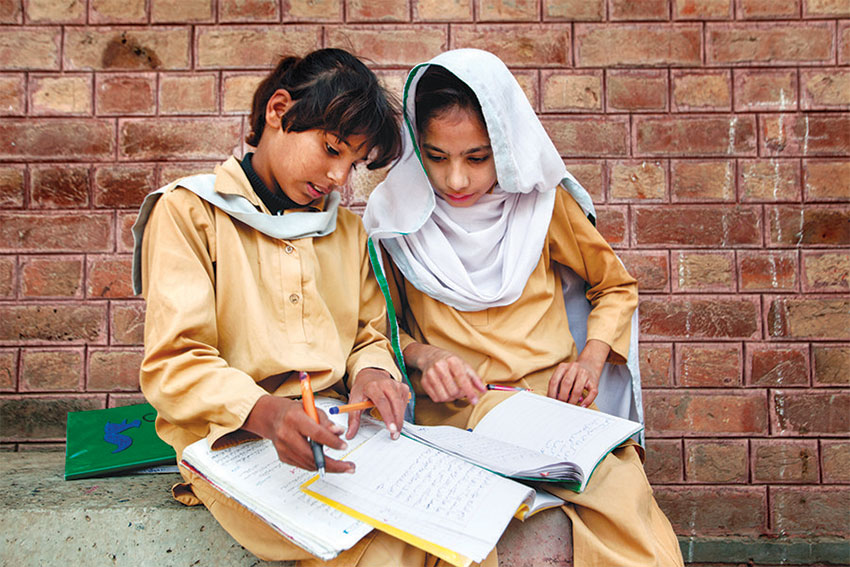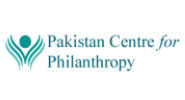Published in The Economist


EVERY three months, Shahbaz Sharif, the chief minister of Punjab, gathers education officials around a large rectangular table. The biggest of Pakistan’s four provinces, larger in terms of population (110m) than all but 11 countries, Punjab is reforming its schools at a pace rarely seen anywhere in the world. In April 2016, as part of its latest scheme, private providers took over the running of 1,000 of the government’s primary schools. Today the number is 4,300. By the end of this year, Mr Sharif has decreed, it will be 10,000. The quarterly “stocktakes” are his chance to hear what progress is being made towards this and other targets—and whether the radical overhaul is having any effect.
For officials it can be a tough ride. Leaders of struggling districts are called to Lahore for what Allah Bakhsh Malik, Punjab’s education secretary, calls a “pep talk”. Asked what that entails, he responds: “Four words: F-I-R-E. It is survival of the fittest.” About 30% of district heads have been sacked for poor results in the past nine months, says Mr Malik. “We are working at Punjabi speed.”
Pakistani education has long been atrocious. A government-run school on the outskirts of Karachi, in the province of Sindh, is perhaps the bleakest your correspondent has ever seen. A little more than a dozen children aged six or seven sit behind desks in a cobwebbed classroom. Not one is wearing a uniform; most have no schoolbags; some have no shoes. There is not a teacher in sight.
Most Pakistani children who start school drop out by the age of nine; just 3% of those starting public school graduate from 12th grade, the final year. Girls from poor families are least likely to attend (see chart); Pakistan’s gap between girls’ and boys’ enrolment is, after Afghanistan’s, the widest in South Asia. Those in school learn little. Only about half of Pakistanis who complete five years of primary school are literate. In rural Pakistan just over two-fifths of third-grade students, typically aged 8 or 9, have enough grasp of arithmetic to subtract 25 from 54. Unsurprisingly, many parents have turned away from the system. There are roughly 68,000 private schools in Pakistan (about one-third of all schools), up from 49,000 in 2007. Private money currently pays for more of Pakistan’s education than the government does.
It is in part the spread of private options that has spurred politicians like Mr Sharif into action. The outsourcing of schools to entrepreneurs and charities is on the rise across the country. It is too early to judge the results of this massive shake up, but it seems better than the lamentable status quo. If this wholesale reform makes real inroads into the problems of enrolment, quality and discrimination against girls that bedevil Pakistan, it may prove a template for other countries similarly afflicted.
There are many reasons for the old system’s failure. From 2007-15 there were 867 attacks by Islamist terrorists on educational institutions, according to the Global Terrorism Database run by the University of Maryland. When it controlled the Swat river valley in the north of the country, the Pakistani Taliban closed hundreds of girls’ schools. When the army retook the area it occupied dozens of them itself.
Poverty also holds children back. Faced with a choice between having a child help in the fields or learn nothing at school, many parents rationally pick the former. The difference in enrolment between children of the richest and poorest fifth of households is greater in Pakistan than in all but two of the 96 developing countries recently analysed by the World Bank.
Yet poverty is not the decisive factor. Teaching is. Research by Jishnu Das of the World Bank and colleagues has found that the school a child in rural Pakistan attends is many times more important in explaining test scores than either the parents’ income or their level of literacy. In a paper published in 2016, Mr Das and Natalie Bau of the University of Toronto studied the performance of teachers in Punjab between 2003 and 2007 who were hired on temporary contracts. It turned out that their pupils did no worse than those taught by regular ones, despite the temporary teachers often being comparatively inexperienced and paid 35% less.
Teachers’ salaries account for at least 87% of the education budget in Pakistan’s provinces. A lot of that money is completely wasted. Pakistan’s political parties hand out teaching jobs as a way of recruiting election workers and rewarding allies. Some teachers pay for the job: 500,000 rupees ($4,500) was once the going rate in Sindh. At the peak of the problem a few years ago, an estimated 40% of teachers in the province were “ghosts”, pocketing a salary and not turning up.
“Pupils’ learning outcomes are not politically important in Pakistan,” says the leader of a large education organisation. Graft is not the only problem. Politicians have treated schools with a mix of neglect and capriciousness. Private schools have been nationalised (1972) and denationalised (1979); Islam has been inserted and removed as the main part of the curriculum. The language of instruction has varied, too; Punjab changed from Urdu to English, only to revert to Urdu. Sindh, where teachers who are often Sindhi speakers may struggle to teach Urdu, announced in 2011 that Mandarin would be compulsory in secondary schools.
Getting schooled
It is against this background that organisations like The Citizens Foundation (TCF) have developed. The charity runs perhaps the largest network of independently run schools in the world, educating 204,000 pupils at not-for-profit schools. It is also Pakistan’s largest single employer of women outside the public sector; in an effort to make girls feel safer in class, all of TCF’s 12,000 teachers are female. At its Shirin Sultan Dossa branch near a slum on the outskirts of Karachi, one girl is more than holding her own. At break-time on the makeshift cricket pitch she is knocking boys’ spin-bowling out of the playground.
In 2016 TCF opened its first “college” for 17- and 18-year-olds at this campus in an attempt to keep smart poor pupils in school longer. Every day it buses 400 college pupils in from around the city. It builds schools using a standard template, typically raising about $250,000 for each of them from donors; it recruits and trains teachers; and it writes its own curriculums.
Since 2015 TCF has taken over the running of more than 250 government schools in Punjab, Sindh and Khyber Pakhtunkhwa. It gets a subsidy of around 715 rupees per month per child, which it tops up with donations. So far it has increased average enrolment at schools from 47 to 101 pupils, and test results have improved.
The outsourcing of state schools to TCF is just one part of the Sindh government’s recent reforms. “Three years ago we hit rock bottom,” says a senior bureaucrat, noting that 14,000 teaching jobs had been doled out in one year to supporters of the ruling Pakistan Peoples Party. Since then it has used a biometric attendance register to cut 6,000 ghost teachers from the payrolls, and merged 4,000 sparsely attended schools into 1,350. Through the Sindh Education Foundation, an arms-length government body, it is funding “public-private partnerships” covering 2,414 schools and 653,265 pupils. As well as the outsourcing programme, schemes subsidise poor children to attend cheap private schools and pay entrepreneurs to set up new ones in underserved areas.

This policy was evaluated in a paper by Felipe Barrera-Osorio of Harvard University and colleagues published last August. The researchers found that in villages assigned to the scheme, enrolment increased by 30% and test scores improved. Parents raised their aspirations—they started wanting daughters to become teachers, rather than housewives. These results were achieved at a per-pupil cost comparable to that of government schools. “Pakistan’s education challenge is not underspending. It is misspending,” says Nadia Naviwala of the Wilson Centre, a think-tank.
While Sindh has pioneered many policies, Punjab has taken them furthest. The Punjab Education Foundation (PEF), another quasi-independent body, oversees some of the largest school-privatisation and school-voucher programmes in the world. It has a seat with the ministers and administrators at Mr Sharif’s quarterly meetings. The Punjab government no longer opens new schools; all growth is via these privately operated schools. Schools overseen by PEF now teach more than 3m children (an additional 11m or so remain in ordinary government-run schools).
This use of the private sector is coupled with the command-and-control of Mr Sharif, who is backed by Britain’s Department for International Development, which helps pay for support from McKinsey, a consultancy, and Sir Michael Barber, who ran British prime minister Tony Blair’s “Delivery unit”. The latest stocktake claimed an “unprecedented” 10% increase in primary-school enrolment since September 2016, an extra 68,000 teachers selected “on merit”, and a steady increase in the share of correct answers on a biannual test of literacy and numeracy.
Some are concerned about the stress on meeting targets in this “deliverology” model. For one thing, independent assessment of the system’s claimed success is hard. Mr Das argues that there is no evidence from public sources that support Punjab’s claims of improved enrolment since 2010. Nor is the fear provoked by Mr Sharif always conducive to frank self-appraisal: some officials may fudge the numbers. Ms Naviwala points out that two of the worst-performing districts in spring 2015 somehow became the highest performers a few months later. She suggests that similar data-driven reforms in Khyber Pakhtunkhwa may have a better chance of success, since they are less dependent on the whims of a single minister. For their part Punjab and its international backers insist that the data are accurate, and that the other publicly available data are out of date.
No one thinks that everything is fixed. Around the corner from that parlous primary school on the outskirts of Karachi is another, privately run school hand-picked for your correspondent’s visit by civil servants. In maths classes pupils’ workbooks have no entries for the past fortnight. What sums there are show no working; answers were simply copied. The head teacher seems to care most about his new audiovisual room, the screen in which is not for pupils, but for him: a bootleg Panopticon, with six CCTV feeds displayed on a wall-mounted screen. This is an effective way of dealing with ghosts. But as the head explains how great his teachers are, one of them strolls up to a boy in the front of her class and smacks him over the head.
Even if there is bluster aplenty and a long way to go, though, the fact that politicians are burnishing their reputations through public services, rather than patronage alone, is a step forward. And if there is a little Punjabi hype to go with the Punjabi speed, then that may be a price worth paying. For too long Pakistani children have suffered because politicians have treated schools as political tools. They deserve much better.
This article appeared in the Briefing section of the print edition under the headline “Stepping up”







